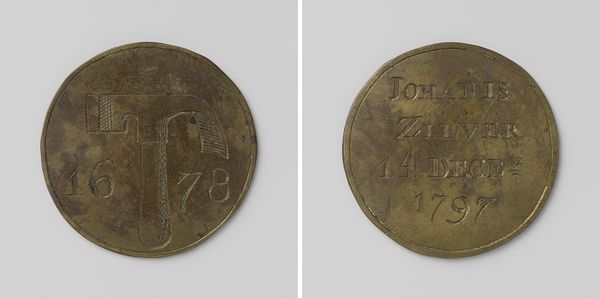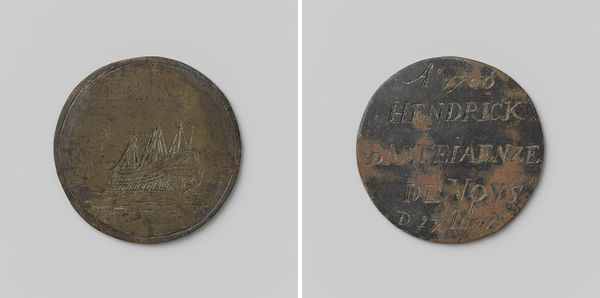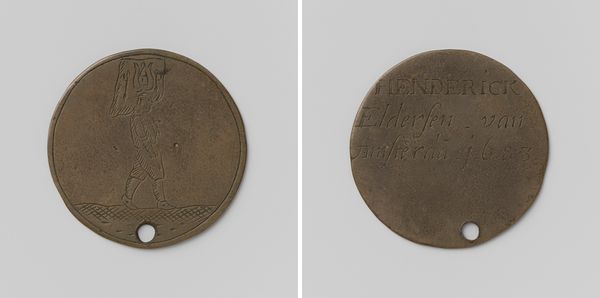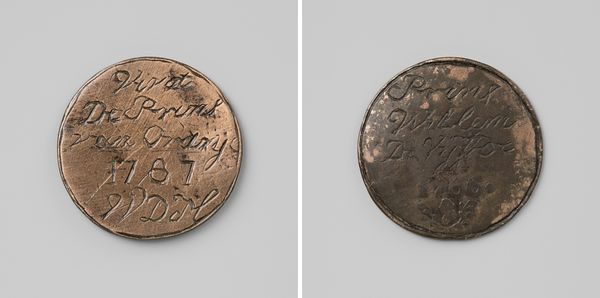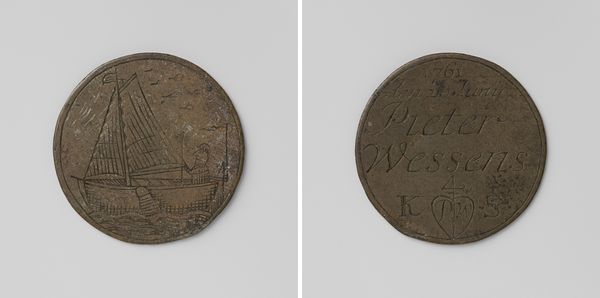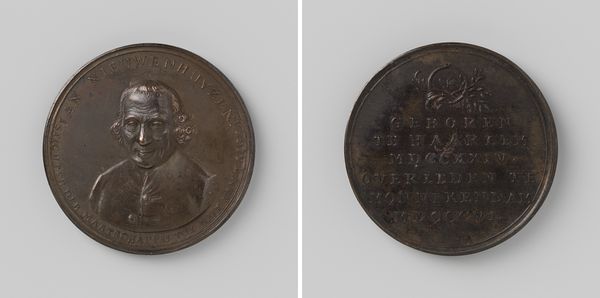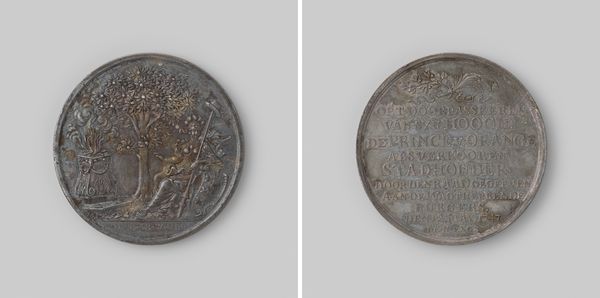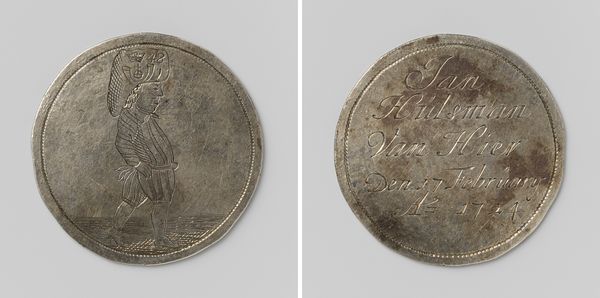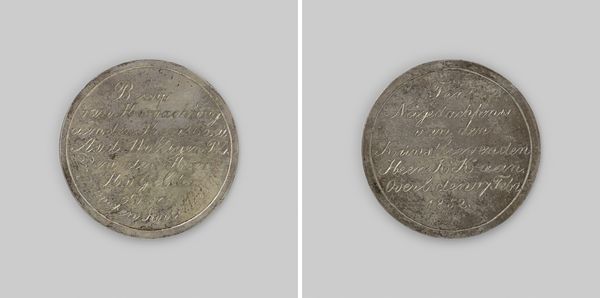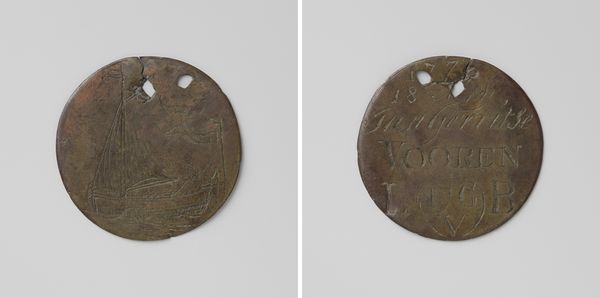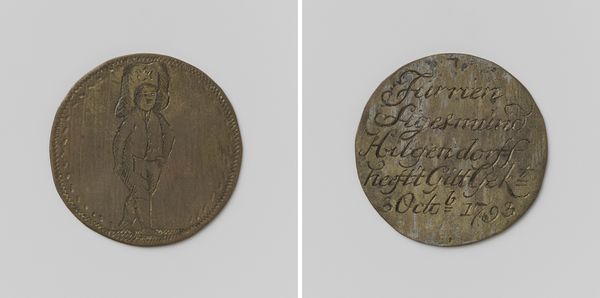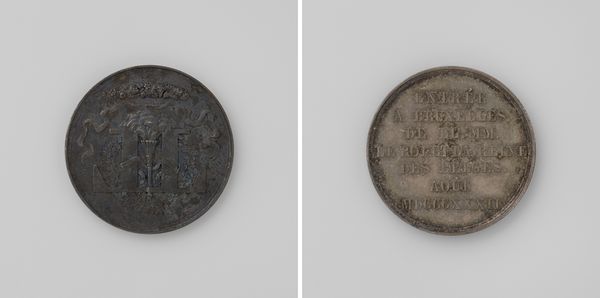
carving, print, metal
#
neoclacissism
#
carving
# print
#
metal
#
carved
Dimensions: diameter 3.6 cm, weight 7.11 gr
Copyright: Rijks Museum: Open Domain
This guild badge for Amsterdam's grain measurers and setters was made from copper alloy around 1794. Guilds were associations of craftsmen or merchants, and they played a vital role in the economic and social life of the Dutch Republic. This object speaks to the intersection of economy, trade, and social hierarchy in the 18th century Netherlands. The front side shows the tools of the trade, likely with a wheat bushel, encircled by the guild's name. On the back, we see an inscription dedicating this token to Jan Schuch on July 12, 1794. As a new guild member, it would have represented his entry into a powerful organization that controlled the grain trade in Amsterdam. Amsterdam in this period was a global center for trade and finance. The guild system regulated standards and protected the interests of its members. But it could also be exclusionary, and the system was starting to be challenged by new economic ideas. Historical research into the guild's records, trade statistics, and personal histories would help us understand this object and its place in the social fabric of Amsterdam.
Comments
No comments
Be the first to comment and join the conversation on the ultimate creative platform.
